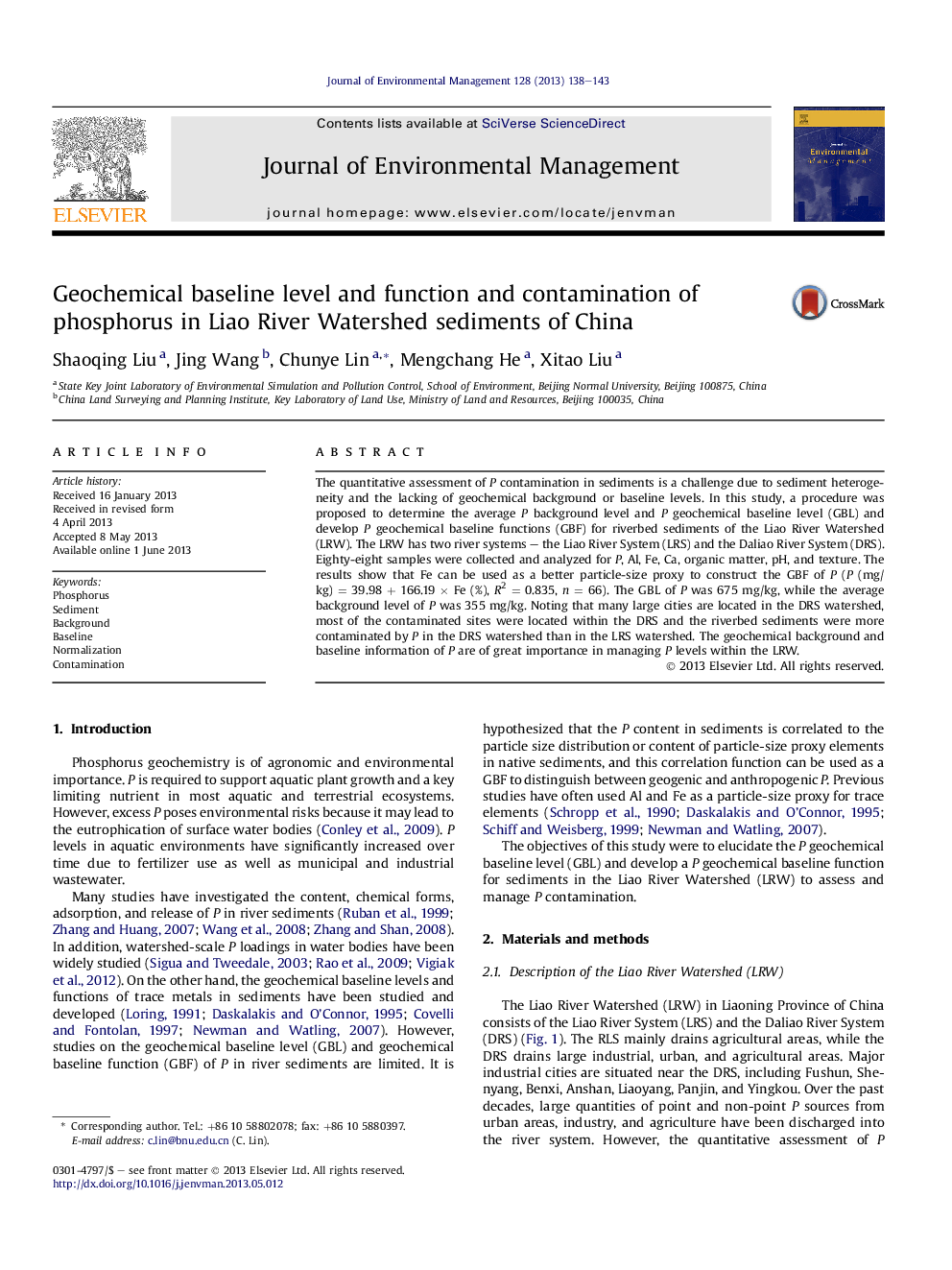| Article ID | Journal | Published Year | Pages | File Type |
|---|---|---|---|---|
| 7484149 | Journal of Environmental Management | 2013 | 6 Pages |
Abstract
The quantitative assessment of P contamination in sediments is a challenge due to sediment heterogeneity and the lacking of geochemical background or baseline levels. In this study, a procedure was proposed to determine the average P background level and P geochemical baseline level (GBL) and develop P geochemical baseline functions (GBF) for riverbed sediments of the Liao River Watershed (LRW). The LRW has two river systems - the Liao River System (LRS) and the Daliao River System (DRS). Eighty-eight samples were collected and analyzed for P, Al, Fe, Ca, organic matter, pH, and texture. The results show that Fe can be used as a better particle-size proxy to construct the GBF of P (P (mg/kg) = 39.98 + 166.19 Ã Fe (%), R2 = 0.835, n = 66). The GBL of P was 675 mg/kg, while the average background level of P was 355 mg/kg. Noting that many large cities are located in the DRS watershed, most of the contaminated sites were located within the DRS and the riverbed sediments were more contaminated by P in the DRS watershed than in the LRS watershed. The geochemical background and baseline information of P are of great importance in managing P levels within the LRW.
Related Topics
Physical Sciences and Engineering
Energy
Renewable Energy, Sustainability and the Environment
Authors
Shaoqing Liu, Jing Wang, Chunye Lin, Mengchang He, Xitao Liu,
